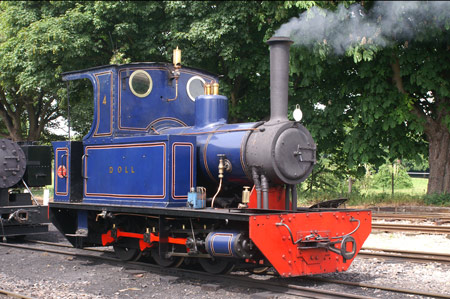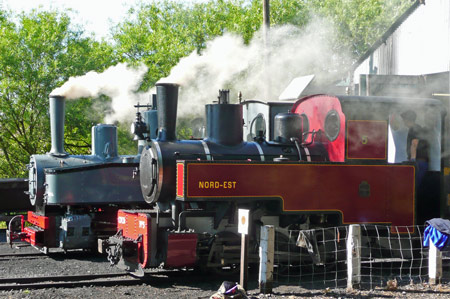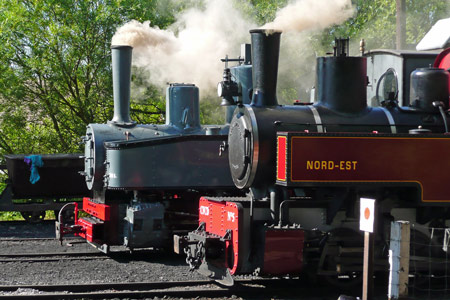This page shows images of the Leighton Buzzard
taken on Saturday 24th May 2009, when First World War locos from Germany,
France and the UK (USA-built) featured.
HfB No.1091 at Page's Park shed with CFCD No.5
Photo: © Ian Boyle, 24th May 2009
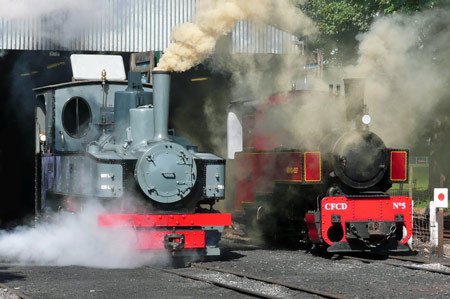
HfB No.1091 at Page's
Park shed with Baldwin 778
Photo: © Ian Boyle, 24th May 2009
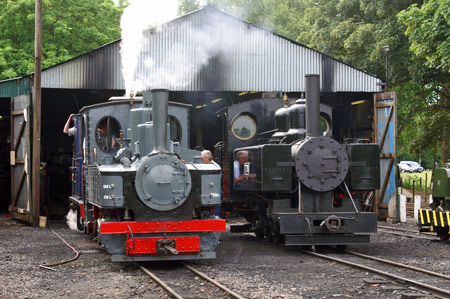
HfB No.1091 at Page's
Park with a freight train
Photo: © Ian Boyle, 24th May 2009

Iorwerth is an 0-4-0VT 2ft gauge vertical
boilered loco built in 2002 by Adam Barber, carrying Glyn Valley Tramway
livery.
Vertical Boilered 0-40VT
Iorwerth
Photo: © Ian Boyle,15th September 2012
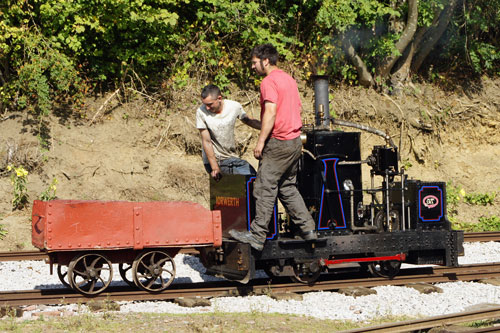
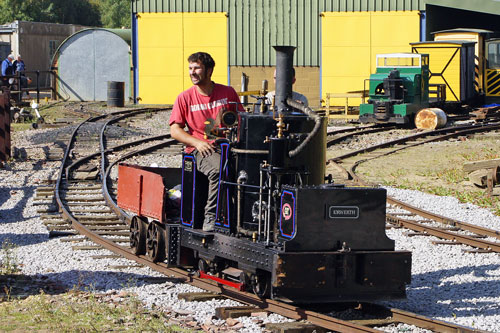
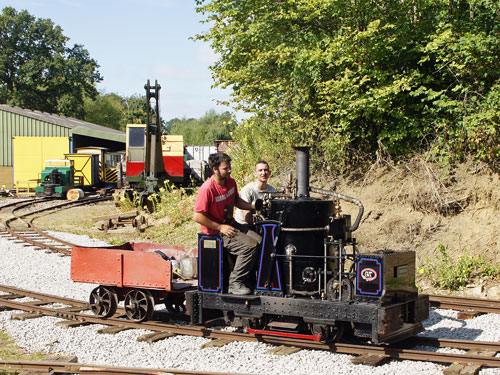
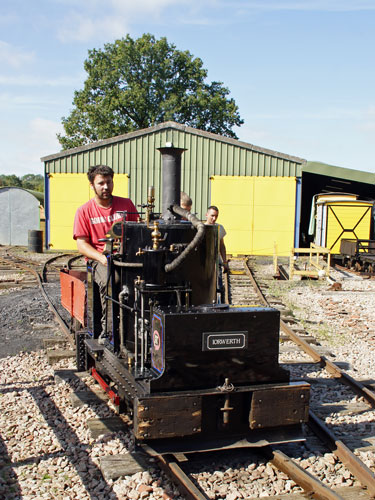
Nutty is an 0-4-0T, 2ft 11in gauge Sentinel
steam loco, works no 7701, built in 1929
Sentinel steam loco Nutty
Photo: © Ian Boyle,15th September 2012
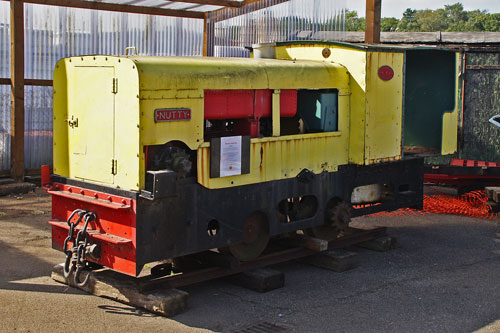
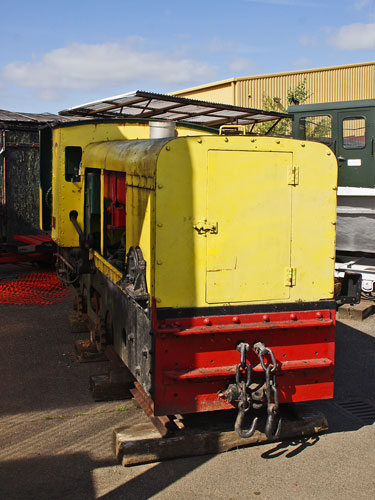
Sezela No. 4 was built by Avonside Locomotive Company in Bristol in
1915, Works Number 1738. It is an 0-4-0 Side Tank locomotive. It was
originally supplied to Sezela Sugar Estates, Illovo, Natal, South Africa.
One of six similar locomotives, Sezela worked in South Africa until
1971. Then it was brought to England by Pleasure Rail and kept at the
Knebworth house and Wintergreen Railway. Most of its sister locomotives have
also been brought back to the UK.
Sezela was restored at Knebworth, appearing in steam at a Leighton
Buzzard Railway Gala in the mid 1980s where it distinguished itself by
getting stuck on Vandyke Road Crossing! Circa 1990, Sezela was sold
to the Bygone Heritage Village museum, Great Yarmouth. Unfortunately the
purchaser had not checked its width - it proved too wide to fit through
their platform. Although it was in steam, it was confined to the loco shed.
Sezela was purchased by a Welsh Highland Railway member in 1993,
although it was not finally delivered to Porthmadog until September 1994. It
arrived with a valid boiler certificate. For a while, it was provisionally
named Ivor, not least because of its similarity to Ivor the
Engine popular in children's fiction. However, the engine never
actually ran carrying that name. In December '95, work started at the Welsh
Highland Railway on rebuilding this locomotive. This proved to be a more
extensive task than had been anticipated. By May '97, it was once again in
steam. However, it has since left the Railway and was at the Leighton
Buzzard Light Railway in September 2012.
Avonside loco Sezela No.4
Photo: © Ian Boyle,15th September 2012
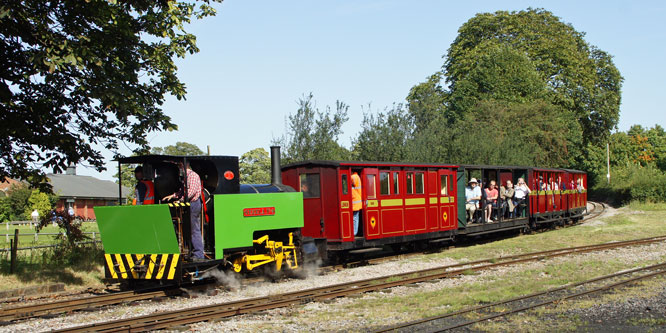
No.778 was one of 495 locos supplied to the British War Department
by the Baldwin Locomotive Works of Philadelphia during the First
World War. She has builders' number 44656 and was completed in 1918.
After the war she was one of 50 locos sent to the North Western
Railway of India, where she was NWR No,15. She later ran with a
sugar factory and was withdrawn in 1983.
Baldwin No.778 at Page's Park shed
Photo: ©
Ian Boyle, 24th May 2009
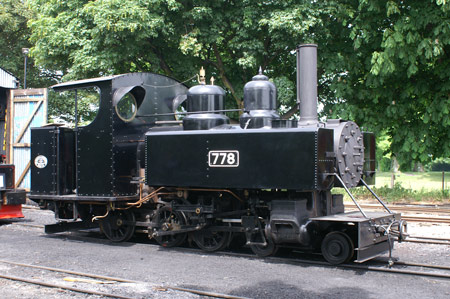
No.11 P.C.Allen is an 0-4-0WT built by Orenstein & Koppel
AG of Drewitz, near Berlin (builders' no.12740). She was built for
the Likomba Banana Co of Cameroon in 1936, later working at the Tiko
Rubber Mill in the same country.
No.11 P C Allen at Page's Park shed
Photo: © Ian Boyle, 24th May 2009
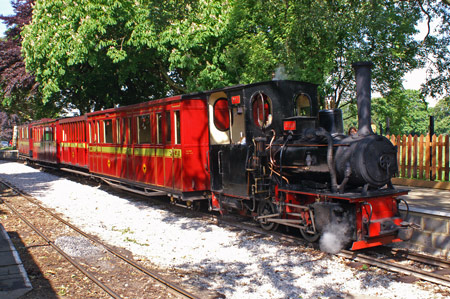
No.4 Doll is an 0-6-0T built by Andrew Barclay & Co of Kilmarnock
(builders' no.1738). She was built for the Sezela Sugar Estate in
Natal in 1915, and worked there until the system closed in 1970.
No.4 Doll at Page's Park
Photo: © Ian Boyle, 24th May 2009
